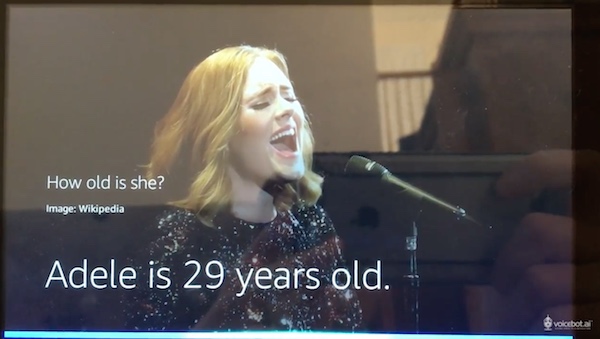Video: Alexa Context Maintenance in Follow-Up Mode Delivers Improved Voice UX
Follow-Up Mode was recently introduced by Amazon to reduce the number of times users have to say, “Alexa.” This is a nice enhancement when you are asking multiple questions. The interaction is more efficient. Another element of Follow-Up Mode is that Alexa maintains context. This adds even more efficiency to interactions and makes them more natural. For example, the video below shows how you can ask about the singer Adele and then do not need to repeat her name for additional questions about her background.
Alexa Context Maintenance
I am not aware of an official Alexa naming convention for this feature, but it is known as “context maintenance.” Consider a query that starts, “Alexa, who is Adele?” To learn about her hometown without context maintenance you would have follow your original question with, “Where is Adele from?” With context maintenance, you can simply say, “Where is she from?”
Context Can Shift with the Conversation
You should also note that the context in the video is not fixed upon the original subject, Adele. After learning that Adele was from Tottenham, England, I asked, “How far is that from London?” Alexa’s natural language understanding (NLU) correctly interpreted that my question was referring to Tottenham, a place, and not the original subject, a person.
Voice UX Evolution to Context Persistence and Context Personalization
These new feature updates point to early stages of voice UX evolution. What many people are anticipating for additional enhancements are “context persistence” and “context personalization.” While “context maintenance” is specific to a user session, “context persistence” will recall context from previous sessions about the same topic or similar interaction. This is where the voice assistant learns what you have done previously and can streamline a current interaction based on information shared during an earlier session. For example, if you have expressed a preference for a certain cuisine or coffee shop location, the voice assistant will automatically deliver that information or at least suggest it, saving the user time.
“Context personalization,” takes this a step further. It can pull data from other sources such as your calendar, email inbox, social media account or Yelp reviews to make your interaction more efficient or even anticipate a user’s needs. This happens in a small way for many people today on mobile when they get into their car and are asked if they would like directions to a place that happens to be the address of their next appointment. This is typically anticipated by consulting the user’s calendar app or by learning that the user travels to certain places at regular times. Machine learning algorithms like these will make Alexa interaction even more helpful in the future. In the interim, Follow-Up Mode combined with “context maintenance” are steps in the right direction.
Amazon Introduces Alexa Follow-Up Mode to Streamline User Interactions









